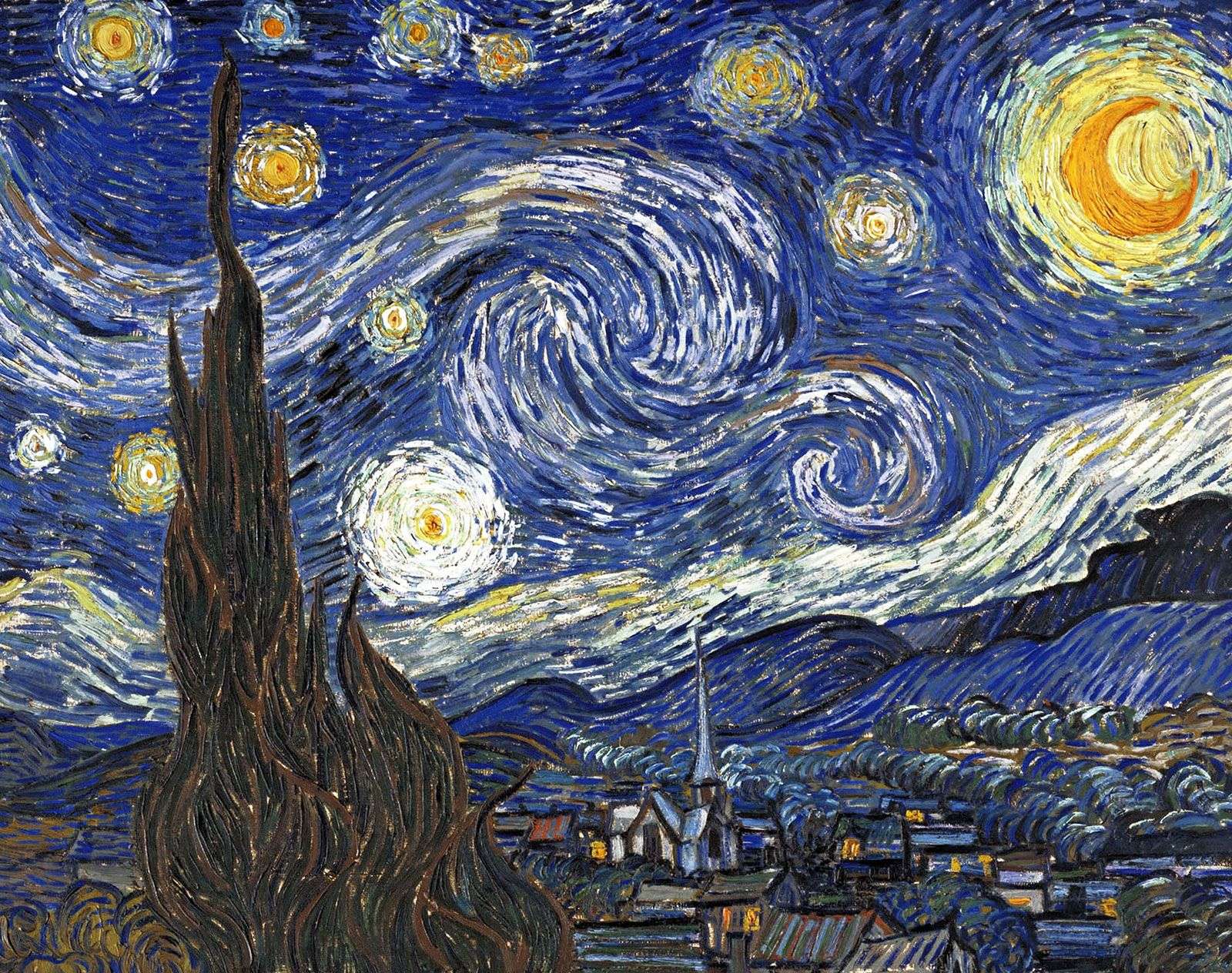لوحة "ليلة النجوم" لفنسنت فان جوخ، التي رسمها في عام 1889، مشهورة ليس فقط بسماءها الليلية المتداخلة ولكن أيضًا بالكثافة العاطفية التي تنقلها. صنع فان جوخ هذه الرائعة أثناء إقامته في مصحة سان بول دو موزول. يعتقد أن السرو الذي يظهر في المقدمة يمثل الموت والخلود. الأمر الذي لا يعرفه الكثيرون هو أن القرية الموجودة في اللوحة مستوحاة من سان ريمي دو بروفانس، حيث كانت تقع المصحة. تعكس الألوان الزاهية والتكوين الديناميكي للوحة رؤية فان جوخ الفريدة وصراعه مع الصحة العقلية، مما يجعلها رمزًا للجمال والاضطراب.
« La Nuit étoilée » de Vincent van Gogh, peinte en 1889, est célèbre non seulement pour son ciel nocturne tourbillonnant, mais aussi pour l'intensité émotionnelle qu'elle dégage. Van Gogh a créé ce chef-d'œuvre lors de son séjour à l'asile Saint-Paul-de-Mausole. Le cyprès au premier plan est censé représenter la mort et l'éternité. Moins connu est que le village représenté est inspiré de Saint-Rémy-de-Provence, où se trouvait l'asile. Les couleurs vives et la composition dynamique de la peinture reflètent la vision unique de Van Gogh et sa lutte avec la santé mentale, en faisant un symbole à la fois de beauté et de tourmente.
:
Vincent van Gogh's "The Starry Night," painted in 1889, is famous not only for its swirling night sky but also for the emotional intensity it conveys. Van Gogh created this masterpiece during his stay at the Saint-Paul-de-Mausole asylum. The cypress tree in the foreground is believed to represent death and eternity. Lesser-known is that the village depicted is inspired by Saint-Rémy-de-Provence, where the asylum was located. The painting's vivid colors and dynamic composition reflect Van Gogh's unique vision and struggle with mental health, making it a symbol of both beauty and turmoil.
